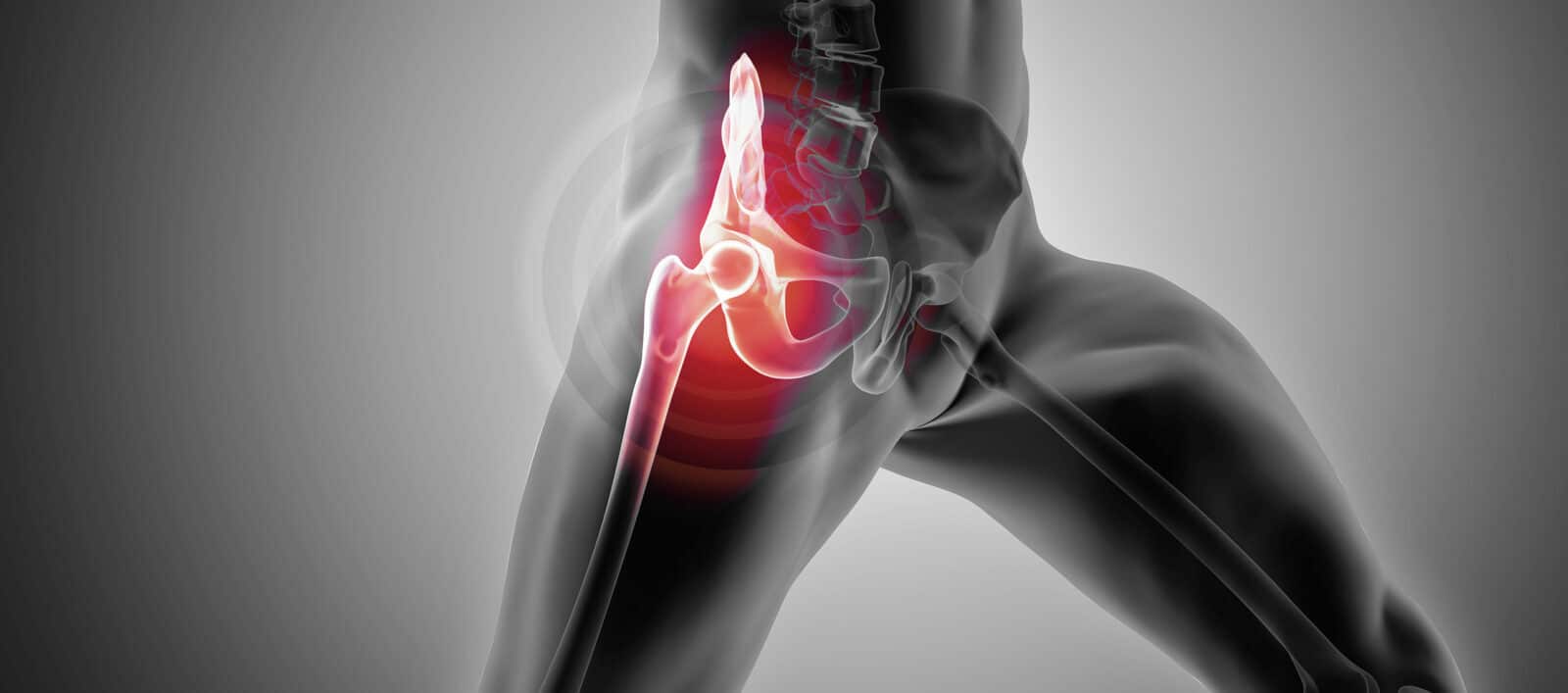Deterioration of the cartilage
The hip is the joint between the pelvis and the femur, and hip osteoarthritis is the wear and tear of the cartilage rubbing between these two bones. This wear causes joint inflammation resulting in pain and discomfort, which worsen as the disease progresses: the bone under the damaged cartilage grows forming bone spurs (osteophytes) around the joint.
Primary coxarthrosis accounts for two-thirds of cases and occurs in people aged over 60. Secondary coxarthrosis is the result of a trauma (fracture, luxation…) or significant strain on the joint (associated with athletes or certain professions). Hip osteoarthritis can also be caused by a hip deformity, which explains why this disease can affect younger patients.
Medical treatment of hip osteoarthritis
At the first symptoms of hip osteoarthritis, a healthy lifestyle (healthy weight, appropriate, low-impact physical activities) is necessary to limit the pain and stop the disease worsening. Sports such as swimming are therefore highly recommended. During flare-ups, paracetamol or any non-steroidal anti-inflammatories can be used to help relieve the pain.
When these treatments are no longer effective, corticosteroid injections, hyaluronic acid viscosupplementation, or platelet rich plasma therapy (PRP) can be envisaged. Stem cell injections can also be discussed.
Total hip replacement : not too soon, not too late
Finally, a total hip replacement can be considered. However, although hip prostheses now have a relatively long lifespan (over 90% of prostheses are still in place after 20 years), this operation must be delayed for as long as possible.
Conversely, the worn joint must not be replaced too late as the patient and their muscles must be in good condition. Furthermore, coxarthrosis in an advanced state can result in bone destruction making the operation much more complicated.

